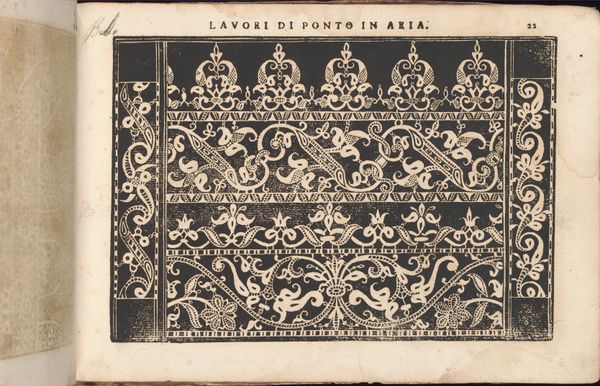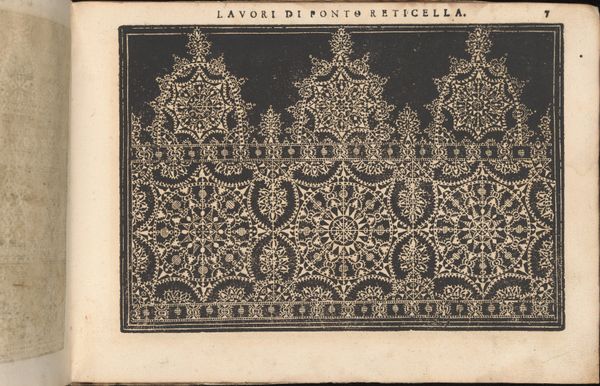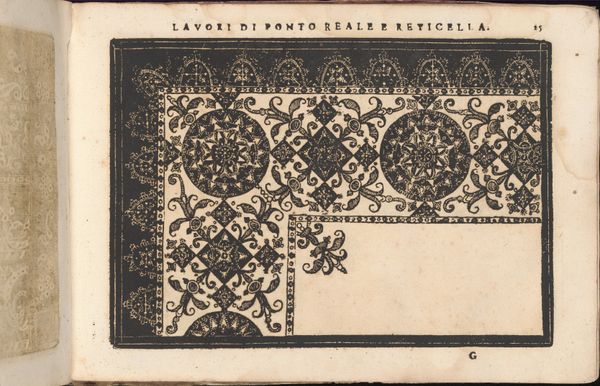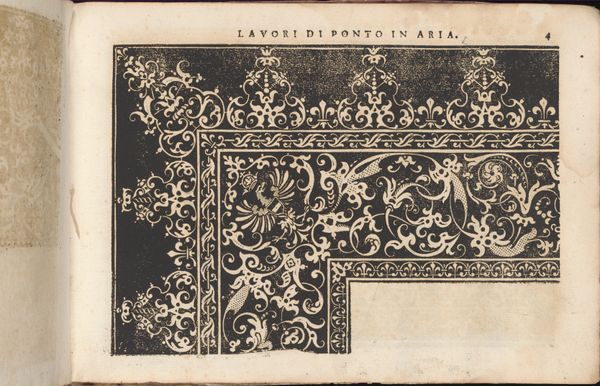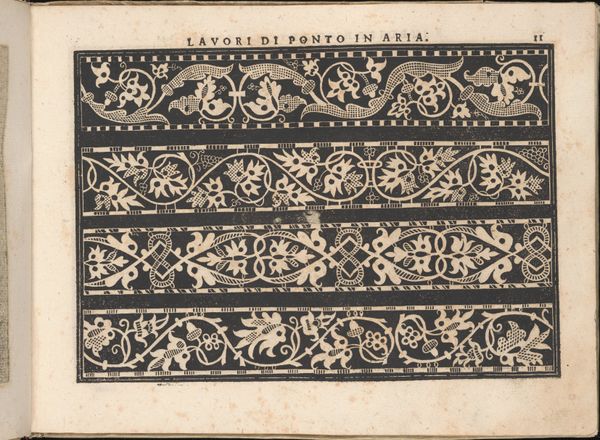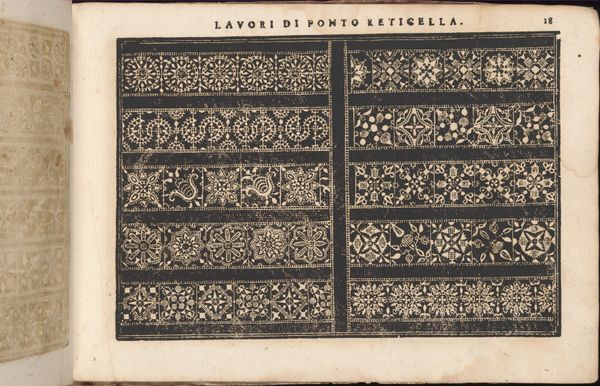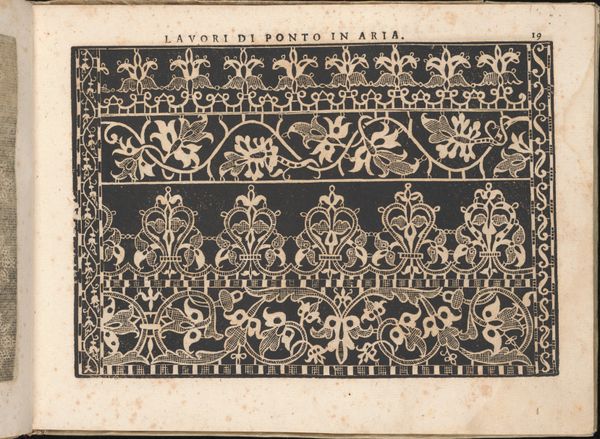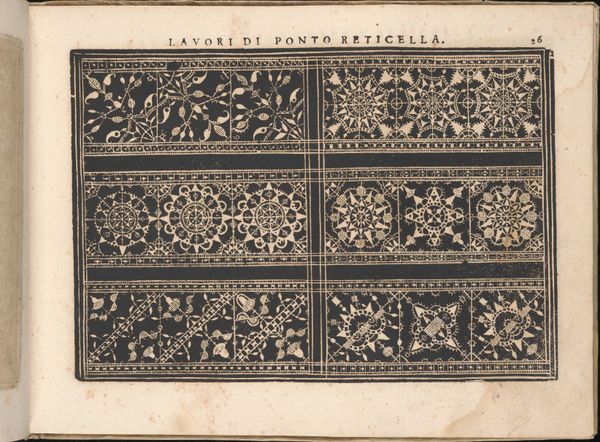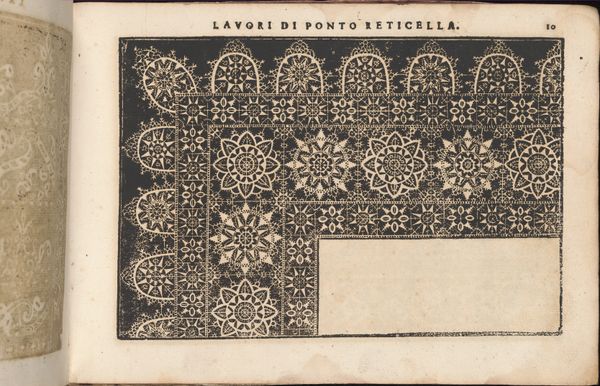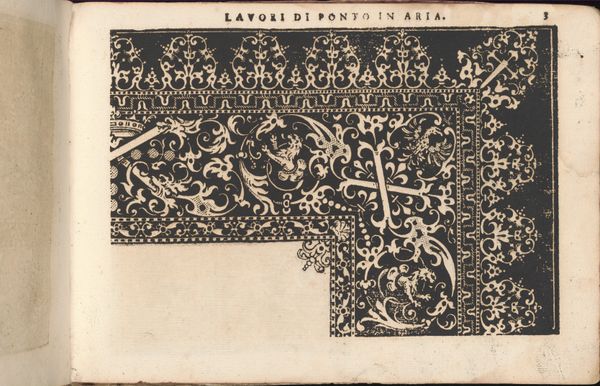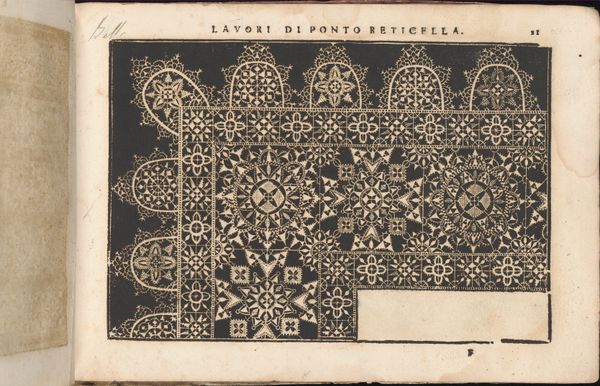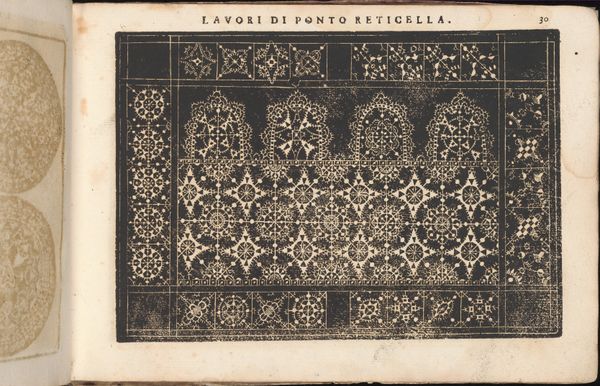
Teatro delle Nobili et Virtuose Donne..., page 23 (recto) 1616
0:00
0:00
drawing, ornament, print, intaglio
#
drawing
#
ornament
# print
#
book
#
intaglio
#
pattern
#
11_renaissance
#
decorative-art
#
italian-renaissance
#
calligraphy
Dimensions: Overall: 7 1/2 x 10 7/16 in. (19 x 26.5 cm)
Copyright: Public Domain
Curator: What immediately strikes me is the precision and intricate geometry of this design; it looks almost architectural, despite being a pattern for lace. Editor: Well, isn’t that charming? Like peering through a looking glass into a fairy's blueprint for a royal tablecloth. But in all seriousness, there's something both calming and hypnotic about it. Curator: Indeed. What we're observing is page 23 from "Teatro delle Nobili et Virtuose Donne..." a book of patterns, created in 1616 by Isabella Catanea Parasole. This particular page, executed through intaglio printmaking, showcases "Lavori di Ponto in Aria," or needle lace patterns. It resides here at The Metropolitan Museum of Art. Editor: "Needle Lace Patterns." Just those words together feels ancient, almost alchemical. It seems unbelievable that someone, with nimble fingers and a knowing heart, once meticulously crafted each loop, swirl, and curlicue we see printed here. Like they spun gold from the very air. Curator: The visual impact resides in the rigorous geometry and stark contrast, rendering an ethereal, lace-like impression despite the heavy ink and paper. The fleur-de-lis motifs particularly evoke heraldic traditions, adding to the work’s historical weight. Consider how each line is carefully measured to achieve such exactness. Editor: Yes, that contrast... stark beauty. Like sunlight through latticework. Makes me think of my grandmother’s lace doilies, but… fancier! Perhaps it's this rigid framework that amplifies the inherent tension between meticulous structure and whimsical natural forms? Each flower or scroll is grounded by this rigorous plan. Curator: Precisely. This structured relationship is essential, especially when analyzed from a Formalist lens. Editor: Makes you think, doesn’t it? It transcends mere "decoration." This isn't just some pretty picture; it's a record, a silent language—evidence of human endeavor across time. Curator: Agreed. These patterns tell us about period aesthetics, the skills valued in women, and the cultural exchange between art and craft. Editor: A real connection. A tangible touch of history—so delicately printed! Curator: Absolutely. There's much to unpack within its calculated composition.
Comments
No comments
Be the first to comment and join the conversation on the ultimate creative platform.
